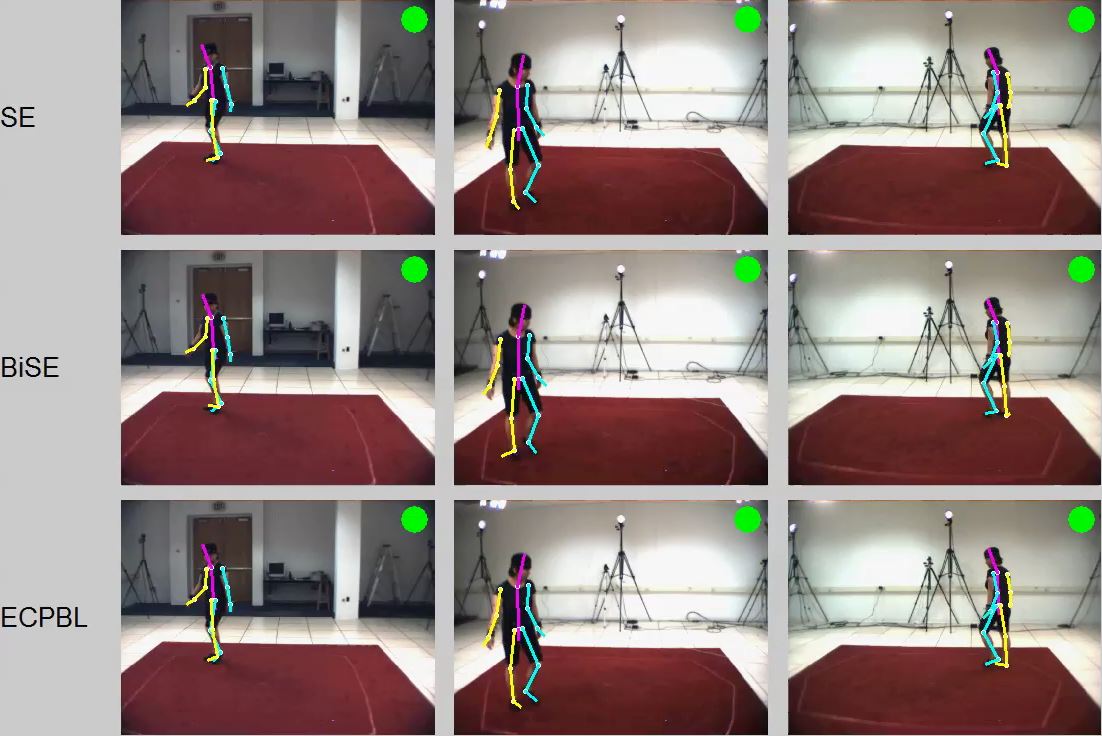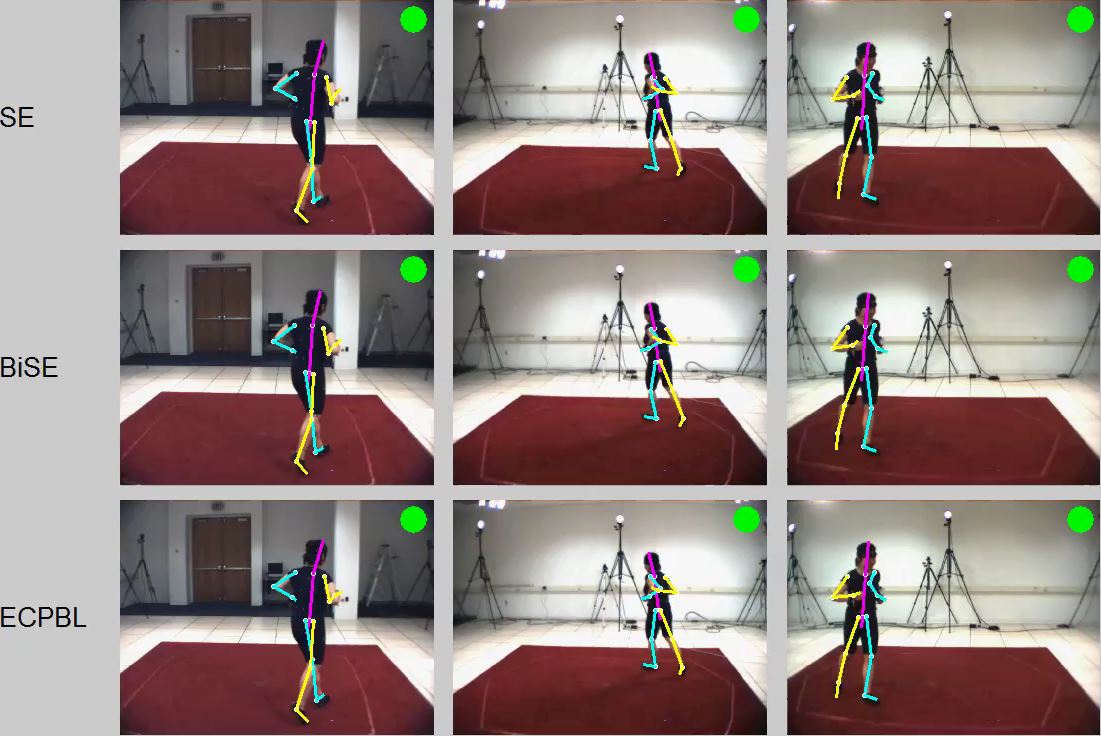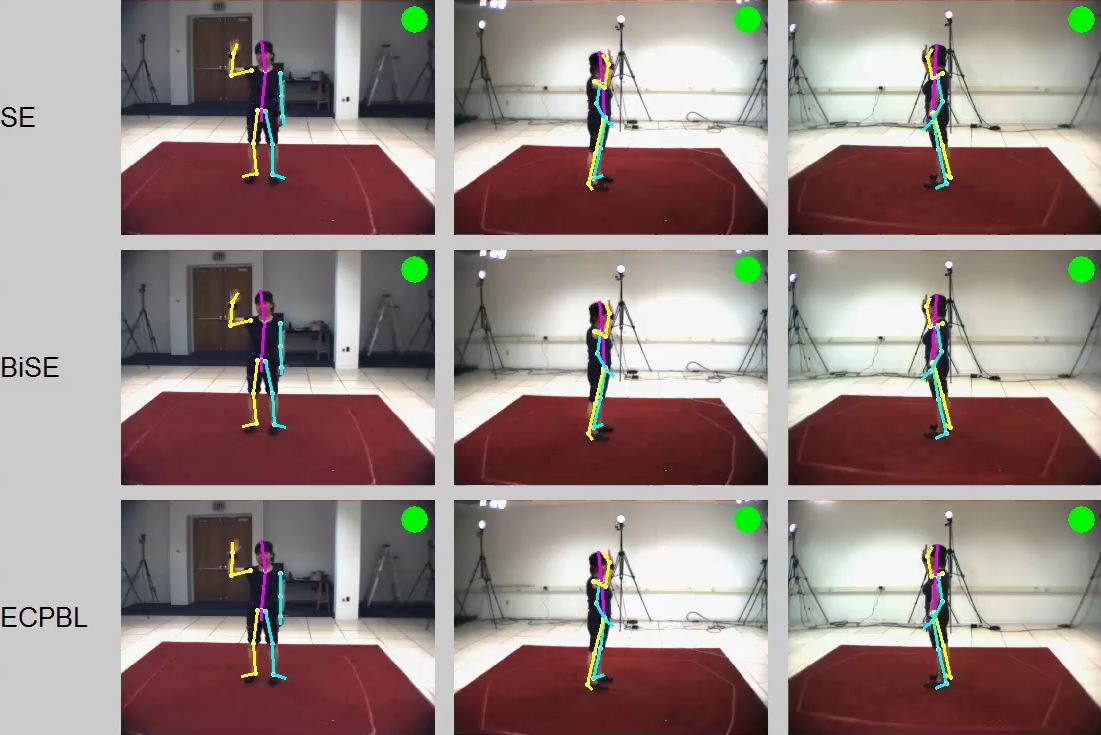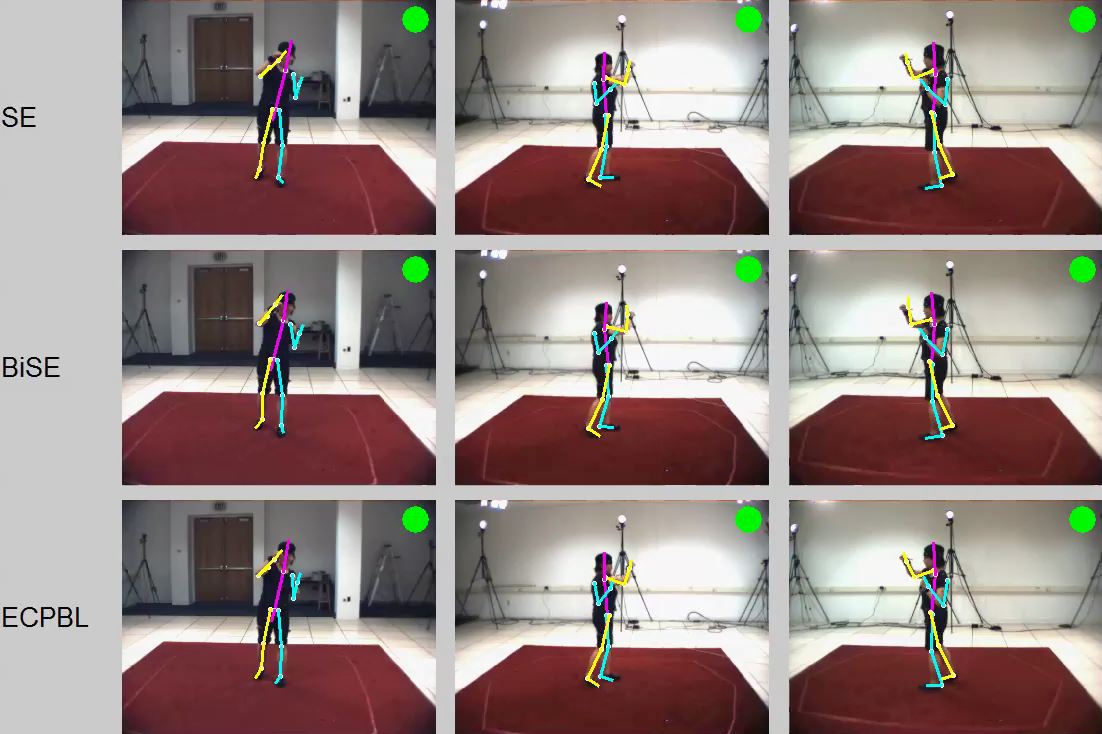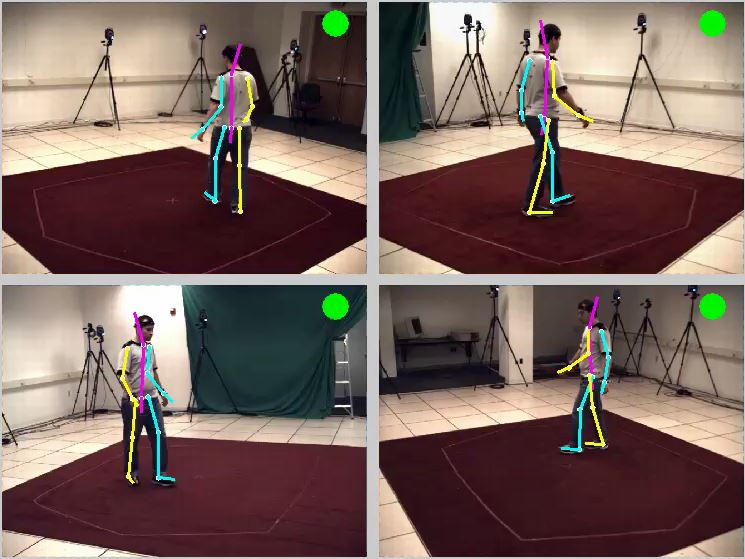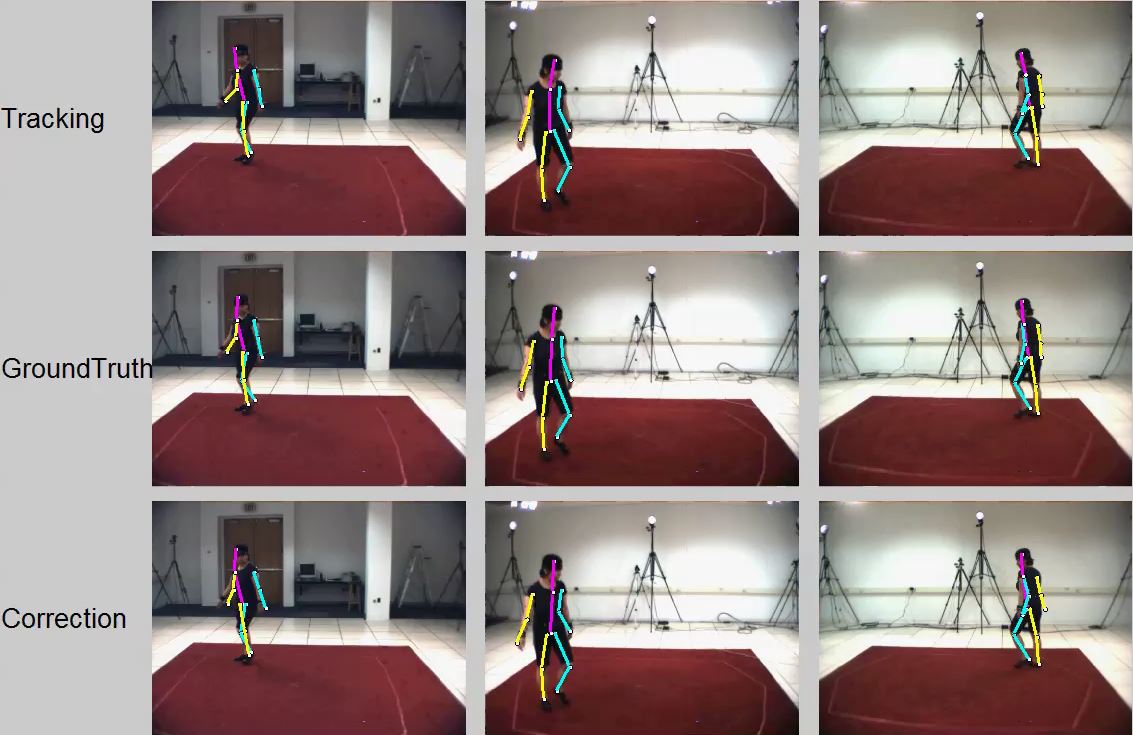The table below shows the results using our likelihood, baseline likelihoods and other methods on the HumanEva-I dataset.
- SE – silhouette and edge likelihood, a HumanEva baseline algorithm [L. Sigal, Leonid, A.O. Balan, and M.J. Black. “Humaneva: Synchronized video and motion capture dataset and baseline algorithm for evaluation of articulated human motion.” IJCV 2010].
- BISE – bi-direction silhouette and edge likelihood, also from HumanEva baseline.
- Loose-limb – graphical model with loose constraint on limb connections [Sigal, et al. “Loose-limbed people: Estimating 3d human pose and motion using non-parametric belief propagation.” IJCV 2012].
- ECPBL – our algorithm.
- ECPBL (joint corr.) – our algorithm with joint correction using the Gaussian Process regression.
- CRBM – motion prediction model with a conditional Restricted Boltzmann machine [Taylor, et al. “Dynamical binary latent variable models for 3d human pose tracking.” CVPR 2010.]
- GPLVM – Gaussian Process Latent Variable model.
- CMFA-VB – learns a low-dimensional manifold as the pose representations. [Li, et al. “3d human motion tracking with a coordinated mixture of factor analyzers.” IJCV 2010].
- TGP – mapping from the image features to the human pose vectors directly using Twin Gaussian processes. [L. Bo and C. Sminchisescu. “Twin gaussian processes for structured prediction.” IJCV 2010].
Our ECPBL outperforms the other unsupervised methods (by 33% for SE and 18% for BiSE). Since supervised methods learn the data bias of the mocap joint system, we used Gaussian process regression to calculate corrected joints in order to compare with other supervised methods. Our joint-corrected ECPBL performs slightly better than state-of-the-art algorithm TGP. Note that our results have smaller standard deviations than all other methods, which indicates that our method is more stable in tracking.
There are videos for pose tracking on HumanEva-I Subject 1 Walking, Jogging, Gesture, and Boxing, and the combo-action tracking of HumanEva-II Subject 4. We also include a video comparing the tracking result, ground truth, and results after joint correction. All videos are in Quicktime format (h.264), playable with the most recent Quicktime player (http://www.quicktime.com/).
EvaIS1Walking
EvaIS1Jogging
EvaIS1Gesture
EvaIS1Boxing
EvaIIS4Combo
Joint Correction


